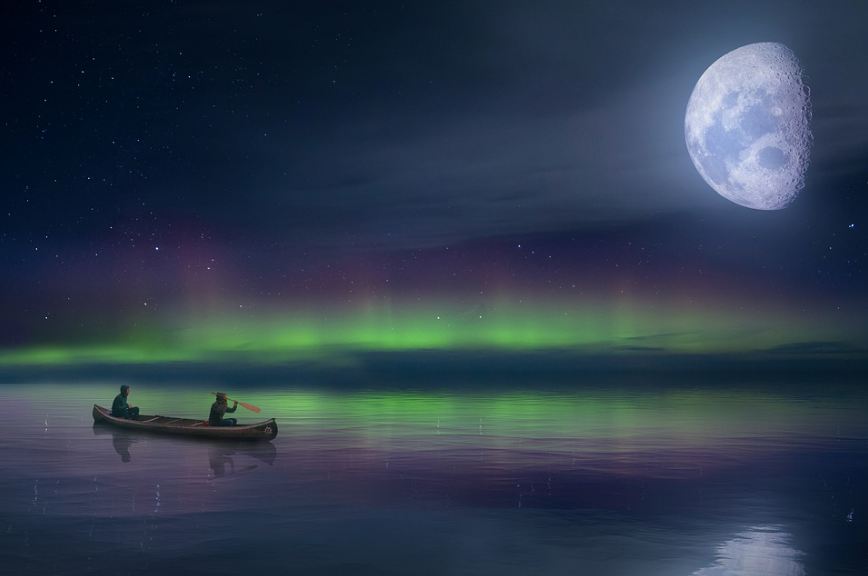“I want auroras and sad prose. I want to watch wisteria grows…” perhaps, artist Taylor Swift was also fascinated and mesmerized by the beauty and the colors of auroras that she even mentioned it and had thought of it when she composed the song “The Lakes.” But what exactly are auroras, and where do they come from?
Commonly called aurora, polar lights, northern lights, or southern lights, these are natural displays of lights in the sky, predominantly seen in high-latitude regions just like around the Arctic and the Antarctic regions.
If you happen to visit or stay somewhere near the North or South Pole, you will probably get to experience this fantastic treat with these beautiful light shows in the sky. It is Aurora Borealis or northern lights if the lights are shown from the North Pole. However, it’s called an Aurora Australis or southern lights if it’s on the South Pole.
WHAT MAKES THIS HAPPEN?
The bright dancing aurora lights are collisions between the gaseous particles and the sun’s electrically charged particles entering the Earth’s atmosphere. The lights that appear in different colors are visible above the northern and southern hemispheres’ magnetic poles.
Although aurora displays appear in many colors, pale green and pink are the most common. Shades of blue, green, violet, red, and yellow have also been reported. The lights come in different patterns and forms like patches or scattered clouds of light, streamers, arcs, rippling curtains, or shooting rays. These variations are caused by the types of ions or atoms being energized while colliding with the atmosphere and are affected by magnetic force lines.
Meanwhile, altitude affects the colors. The blue-violet/red lights occur below 60 miles, with bright green are strongest between 60-150 miles (100-240 km). Above 150 miles (240 km), the lights appear ruby red. Aurora lights are generally extended from 80 kilometers to as high as 640 kilometers above the Earth’s surface.
BEST PLACES TO WATCH THE AURORAS
Auroras are more frequent at higher latitudes. They frequently appear in Alaska, Canada, Antarctica, and places closer to the Earth’s poles.
There are times that they can be seen closer to the equator and even as far south as Mexico.
The northern lights near the magnetic poles can reach far in the western hemisphere like in New Orleans, while similar locations in the east never witness these magnificent lights. However, North America’s best places to watch aurora lights are in Canada’s northwestern, particularly in the Yukon, Nunavut, Northwest Territories, and Alaska. Additionally, auroral displays are also visible over Greenland and Iceland’s southern tip, at Norway’s northern coast, and over Siberia’s coastal waters. Meanwhile, southern auroras are rarely seen because they are stuck in a ring around Antarctica and the south of the Indian Ocean.
In Alaska and Greenland, auroras are visible during the nights any time of the year, but the naked eyes cannot see them unless it’s dark. Some small communities in the north that are clear from ‘light pollution’ always feature the lights’ best view.
WHEN IS THE BEST TIME TO WATCH FOR AURORAL DISPLAYS?
According to researchers, auroral displays appear in cycles with a peak that occurs every after 11 years. The last peak period was in 2013, and the next would be in 2024, and the following would be 2035.
The best season to watch is during the winter when there are extended nights of darkness, and the frequency of clear nights allows many good opportunities to watch the auroral displays. Ideally, local midnight is a perfect time to catch these lights in different hues.
LEGENDS OF THE LIGHTS
‘Aurora borealis,’ or the lights of the northern hemisphere, means ‘dawn of the north’ and the ‘Aurora australis’ means ‘dawn of the south.’ Aurora was the name of the goddess of the dawn in Roman myths.
These lights are also part of many cultural legends. In medieval times, it was a harbinger of war or famine. New Zealand’s Maoris shared a belief with many northern people of Europe and North America that the auroral lights were reflections from torches or campfires.
Wisconsin’s Menominee Indians believed that the lights are indicators of the place where manabai’wok (giants) can be found. They were the spirits of great hunters and fishermen. Meanwhile, Alaska’s Inuit believed that the lights were the spirits of the animals they hunted, such as seals, salmon, deer, and beluga whales. But some aboriginal peoples believe that the lights were the spirits of their people.
Thanks to researchers and to Science that makes us understand the many unfathomable and unexplainable phenomena in the entire Earth, and even on the Milky Way galaxy, now there are answers to the many questions that we ask.


